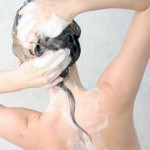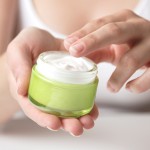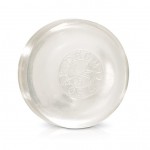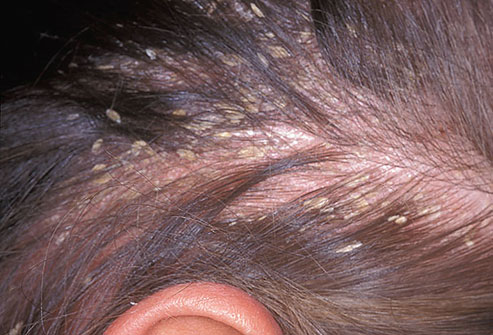Seborrheic dermatitis is an inflammatory skin disorder that generally affects the scalp. It may cause flaky, white to yellow scales, itchiness and stubborn dandruff. In adults, it is known as seborrheic dermatitis but it is called cradle cap in infants.
Aside from the scalp, it may also be seen in upper chest, back, face and other parts of the body that have active sebaceous glands.
This skin condition is not serious but it can bring discomfort and even embarrassment as it is normally seen in the visible parts of the body. Some may think that is a result of poor hygiene however, poor hygiene is not the culprit of this condition.
Seborrheic dermatitis can come and go and may have flare ups during exposure to the triggering factor. However, with proper medication and some lifestyle change, people can live and outgrown the condition.
What are the symptoms of seborrheic dermatitis?
Symptoms of seborrheic dermatitis may include:
- Redness of the skin
- Thick crusts found in the scalp
- Dandruff may appear in the affected areas like hair, beard and eyebrows.
- White or yellow scales like dandruff may also be seen in other areas like chest or in the groin area.
- Soreness
- Severe itchiness
- Skin lesions
- Oily skin
- Hair loss is observed if the scalp is affected by Seborrheic dermatitis.
Aside from the scalp, these symptoms can also be observed in the eyebrows, behind the ears, both sides of the nose, armpits and even in groin area. This area is where the sebaceous glands are located. Some people may only experience the scales over their scalp but severe forms of Seborrheic dermatitis may affect all areas with sebaceous glands thus affecting self-esteem of a person.
Meanwhile, in children cradle cap symptoms are:
- Thick crust that have brown or yellow scales found in the scalp of the child.
- Scales may also appear in the ears, nose and eyelids.
- Cradle cap is observed in newborn infants and may start to disappear when they reach 3 years of age.
Your doctor may run some medical tests to your skin to verify that what you have is seborrheic dermatitis because some ailments may have the same symptoms. Some diseases that have the same symptoms like seborrheic dermatitis are:
- Psoriasis
- Eczema
- Tinea capitis
What are the causes of seborrheic dermatitis?
The exact cause of seborrheic dermatitis is not yet clear. However, there are factors that may play an important factor in developing seborrheic dermatitis. Some of the possible causes of Seborrheic dermatitis may include:
- Malassezia, a fungus is one of the possible causes. When this grows in the overactive sebaceous glands, the result is the seborrheic dermatitis. However, this type of fungus is not contagious.
- The flakes may worsen during the winter season as the skin may suffer skin dryness.
- Those who have neurological conditions like Parkinson’s disease, stroke or head injury are at higher risk of developing seborrheic dermatitis.
- Stress can trigger an attack or worsen the existing symptoms.
- People who have HIV or AIDS are susceptible to this skin condition. The symptoms that are exhibited with HIV and AIDS are considerably worse than the others.
What are the treatments for seborrheic dermatitis?
Treatments for seborrheic dermatitis differ depending on the location of the affected area and on the severity of the symptoms.
Seborrheic dermatitis may also come and go. A flare up of the skin condition may depend on a number of factors.
Some treatments for seborrheic dermatitis are:
1. Antifungal shampoos
 Ordinary shampoos may not be able to solve your dandruff. Your doctor may require that you need an antifungal shampoos to reduce the flakes in your scalp.
Ordinary shampoos may not be able to solve your dandruff. Your doctor may require that you need an antifungal shampoos to reduce the flakes in your scalp.
2. Antifungal creams
 Antifungal creams can be used in the affected areas. This may reduce the flakes and soreness. However, do not use antifungal creams without your doctor’s knowledge as some of these may cause allergic reaction.
Antifungal creams can be used in the affected areas. This may reduce the flakes and soreness. However, do not use antifungal creams without your doctor’s knowledge as some of these may cause allergic reaction.
3. Tea tree oil
 Tea tree oil can lessen the itchiness as well the redness of the skin. However, use this with caution, as some individuals are allergic to tea tree oil.
Tea tree oil can lessen the itchiness as well the redness of the skin. However, use this with caution, as some individuals are allergic to tea tree oil.
4. Use mild soaps
 Use of mild soap is recommended to avoid irritating the affected area. Make sure that you also rinse well when you are bathing.
Use of mild soap is recommended to avoid irritating the affected area. Make sure that you also rinse well when you are bathing.
5. Wear comfortable cotton clothes
 Wearing comfortable clothes may avoid irritating your skin. Do not wear too tight clothes as this may aggravate the condition. Cotton clothes are the most recommended.
Wearing comfortable clothes may avoid irritating your skin. Do not wear too tight clothes as this may aggravate the condition. Cotton clothes are the most recommended.
Seborrheic dermatitis may be bothersome especially to women who love to style their hair but with medication and some lifestyle change, seborrheic dermatitis is manageable.
